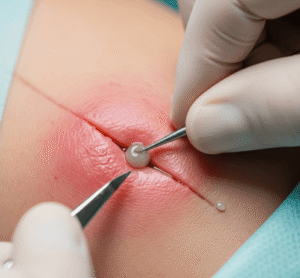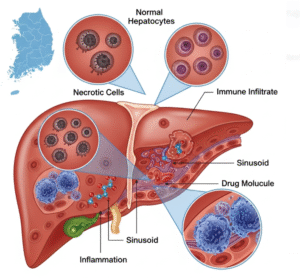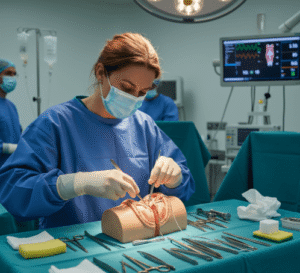Overview
Craniopharyngioma is a rare, benign (noncancerous) brain tumor that develops near the pituitary gland and hypothalamus. Although it is noncancerous, its location can cause significant hormonal, vision, and neurological problems. In Korea, advanced neurosurgical and endocrinology teams provide excellent diagnosis and treatment using modern techniques like endoscopic surgery and targeted radiation.
What is Craniopharyngioma?
Craniopharyngioma is a slow-growing tumor that arises from embryonic tissue near the pituitary gland. It often affects children and young adults but can occur at any age. Despite being benign, its proximity to critical brain structures can lead to serious complications if untreated.
Symptoms
- Persistent headaches
- Vision problems (double vision, partial blindness)
- Hormonal imbalances (growth failure in children, infertility, fatigue)
- Increased thirst and urination (diabetes insipidus)
- Nausea, vomiting, or weight gain/loss
- Behavioral or cognitive changes
Causes
- Believed to arise from remnants of Rathke’s pouch (embryonic tissue)
- No clear environmental or lifestyle cause identified
- Rarely associated with genetic conditions
Risk Factors
- Can affect both children (5–14 years) and adults (50–74 years)
- Slightly more common in people with family history of pituitary or hypothalamic tumors (rare)
Complications
- Permanent hormone deficiencies (hypopituitarism)
- Vision loss if optic nerves are compressed
- Recurrence even after surgery
- Hydrocephalus (fluid buildup in the brain)
Prevention
- There are no known preventive measures
- Early recognition of symptoms like vision problems or growth issues in children can lead to timely diagnosis
Treatment Options in Korea
South Korea has highly developed neurosurgical and endocrinology departments in major hospitals like Samsung Medical Center, Asan Medical Center, and Seoul National University Hospital. Treatment may involve:
1. Diagnosis
- MRI or CT scan to locate and assess the tumor
- Hormonal blood tests to check pituitary function
- Ophthalmologic exam for vision assessment
2. Surgery
- Endoscopic endonasal approach (minimally invasive) for smaller tumors
- Craniotomy (open surgery) for larger or complex cases
3. Radiation Therapy
- Stereotactic radiosurgery (e.g., Gamma Knife) for residual or recurrent tumors
4. Hormone Replacement Therapy
- Lifelong hormone supplements may be needed if pituitary function is impaired
5. Long-Term Monitoring
- Regular imaging and hormone tests to detect recurrence early













